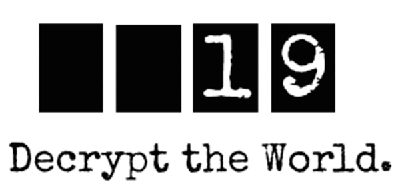Of Hergé, humbug and humility
Debunking the myths of corruption in China

In The Blue Lotus, a mid-1930s comic by the Belgian author Hergé which sees the celebrated boy detective Tintin and his faithful canine sidekick Snowy making a trip to Shanghai to fight an international drug-smuggling syndicate, Tintin rescues a Chinese boy from drowning. The Chinese boy, Chang, is initially surprised by Tintin’s kindness: he had been taught to believe that all “white devils” were wicked. Tintin urges the boy not to generalise, and in a moving paean to international understanding at a time in world history when this virtue was in especially short supply, Tintin goes on to enumerate the various ridiculous stereotypes held about the Chinese by the Europeans. When Tintin is done, Chang bursts into laughter and exclaims, not without some irony: “They must be crazy, people in your country.”
A full eight decades after this powerful object lesson on the perils of cultural generalisation, one particular notion about the Chinese seems still to be stubbornly anchored in the minds of an influential subsection of Western opinion: the idea that China is somehow inherently, culturally corrupt. According to this line of thinking, which seems especially tenacious in business circles, the Chinese somehow have a different moral code than the rest of humanity when it comes to corruption, and tolerate it nonchalantly; corruption is just not seen as a vice in China, these people believe, and that’s just the way it goes (a view disseminated by those who hold it with great eagerness in private, but oddly, never in public). The sort of armchair cultural theorists who advance this notion – many of them, disturbingly, live in China – would no doubt feel comforted in their prejudice by the massive crackdown on corruption currently being enforced in China, the largest since the unlamented era of Chairman Mao: there you go, they might say, the proof is in the pudding. The authorities surely wouldn’t feel the need to come down so hard on the phenomenon if it weren’t so deeply ingrained in Chinese culture. Right? Wrong.
To be clear, no one can seriously dispute that corruption is a massive problem in China. At time of writing the country ranks 83rd out of 167 in Transparency International’s Corruption Perceptions Index, placing it in the wholesome general company of Liberia, Zambia and Albania. President Xi Jinping’s corruption crackdown has seen the arrest of 1,500 people, an unimaginably high number even for the size of the Chinese bureaucracy, and while many of these arrests are no doubt spurious and politically motivated, the mere perception that so many civil servants could be tainted by corruption is telling in and of itself. Neither is the phenomenon particularly new: a certain Wang Anshi, a notable Chinese civil servant, remarked on the sheer scale of corruption during his time and made sweeping recommendations on the subject to the authorities. Wang died in 1086. In other words, he was formulating his anti-corruption theory around the same time as the Norman invasion of England.
So the fact that corruption has a long history in China is in no doubt, although this historical argument can only be taken so far, since corruption, of course, also has a pretty long history in the rest of the world: witness the granting of “indulgences” assuring entry to paradise in exchange for generous donations to the Church during the Middle Ages, which led an indignant German called Martin Luther to start a moderately successful religious movement known as Protestantism: this particular corruption scandal shaped modern Western society.
That corruption is somehow also cultural to China, though, is a very different proposition, and one which is profoundly mistaken. After dozens if not hundreds of investigations of commercial corruption in China, the observer comes away not with the impression of how easy the detection process is, but how hard. The conversations between a corruption investigator acting undercover and a source leading to an admission of corruption are fearsomely tortuous and protracted. They are conducted in confidential mood. They have to occur only face to face, because few people nowadays agree to use electronic media or phones in negotiating bribes. They have to be handled by a highly experienced investigator, who has to gauge the pace and tone of the relationship very judiciously in order not to alarm or drive away his contact: push too hard and the contact will resent your indelicacy or become suspicious, and refuse to share any more details. Go too softly and the contact will see no need to go into any sensitive matters with you, stalling your investigation. And of course, the process is inherently fraught with risk: a particularly insensitive approach will lead you to being rumbled.
The conversation tends to be heavily nuanced: case analysts listening to recordings sometimes have to spend hours hunched over their desks, headphones jammed in tight to make sure they don’t miss anything, hitting play and rewind repeatedly to make sure they got a particular nuance right and eliminated any extraneous meanings, references and red herrings. Participants involved are rarely referred to by name directly, so you also have to work out who the contact means when he says “the purchasing department” or, for that matter, “the guy on the fifth floor”. The conversation brims with euphemisms, too: people who talk about bribery in China almost never use the word “bribe”. More organised investigators keep a spreadsheet full of tactful replacements in colloquial use, for use as reference guides during reviews of incriminating communications: such lists include dozens of different expressions. In some cases the conversations are so nuanced it is impossible to even come to a comfortable conclusion. In these situations honest investigators just transcribe the whole lot, give it over to the client and say, in essence, you decide.
That such acrobatics are necessary to even arrive at a veiled admission of bribery illustrates what should have been obvious even to armchair cultural theorists all along: as it turns out, the Chinese are like everybody else; they do not in any way regard corruption as morally acceptable, so when they resort to it they do it only with someone they feel they can trust after a long probation period, and in ways that ensure maximum secrecy and deniability. If corruption really were culturally ingrained in China, there would of course be no need for all this coyness: you would just ring up a sales manager and ask point-blank if you could get a kickback on the contract, and between two yawns he’d say, sure. He might even send you a text or an email with details of your emoluments. These would come via wire transfer instead of suitcases of cash carefully delivered in out-of-the-way hotel lobbies, as they so often actually do.
Any idea that the Chinese are culturally corrupt, therefore, is nonsense. Corruption is certainly institutionalised in China, but this is not the same thing as cultural. Corruption endures in China because its eradication depends on independent institutions duly empowered to report and investigate corruption, and there is no such thing as an independent institution in China. It wasn’t the case in Wang Anshi’s time a millennium ago, and sadly it still isn’t the case now. The legislature is a rubber stamp, the judiciary is appointed by the Communist Party and the media are controlled by the government. In the end the only people being investigated, however many, are those the Communist Party deems fit to investigate. The corrupt who are still protected by the party-political machine, on the other hand, will never see the inside of a court room, much less the glare of cameras dutifully filming yet another “confession” for state-controlled television.
The Communist Party will never root out corruption until it is willing to give up some of its power, and since this is not a choice it appears prepared to make, corruption campaigns – no matter how sweeping and terrifying – will continue to ultimately be both shallow and episodic, destined to fizzle out at one time or another without ever making a dent on the underlying infrastructure that actually enables corruption. It was ever so: a thousand years ago the earnest Wang Anshi failed to convince the authorities to reform the system to tackle corruption. Much more recently, the “Three Anti” campaign launched by Mao Zedong to eradicate corruption in the early stages of Communist rule was even more brutal than today’s, causing hundreds of thousands of suicides, according to some sources. Yet despite all the repression, here we are today more than six decades later, and still the Communist Party is talking about rooting out corruption and “striking hard”.
So, this difference between institutional and cultural is crucial. Still, the tendency to demonise an entire people for some perceived “cultural” failing persists, and obviously is not limited to the Chinese. This says more about the insecurities of those doing the demonising than anything else. It also promotes a rather familiar mindset whereby self-styled “enlightened” populations can continue to feel good about themselves by spinning a fictional narrative about benighted “cultures” wallowing in iniquity supposedly because that’s just who they are. This mindset in turn makes it harder to practice healthy self-scrutiny. Despite ostensibly harsh, zero-tolerance pieces of legislation like the UK Bribery Act or the US Foreign Corrupt Practices Act, it’s important to remember that a lot of corrupt behaviour remains perfectly legal and normalised in the West as well. The revolving door between government and industry in the US, with government-watchdog employees being so often and so successfully poached for handsome salaries by employers in the very industry they are supposed to guard, is one such example. This, ironically, is precisely when corruption can be said to qualify as being embedded in the culture: when no one seems to see anything wrong with it.
All good reasons to remain critical, but humble as well. Remember Tintin, and beware of ethnic and cultural generalisations.
© 2016-2019 Code 19 Business Intelligence Limited – All rights reserved.
